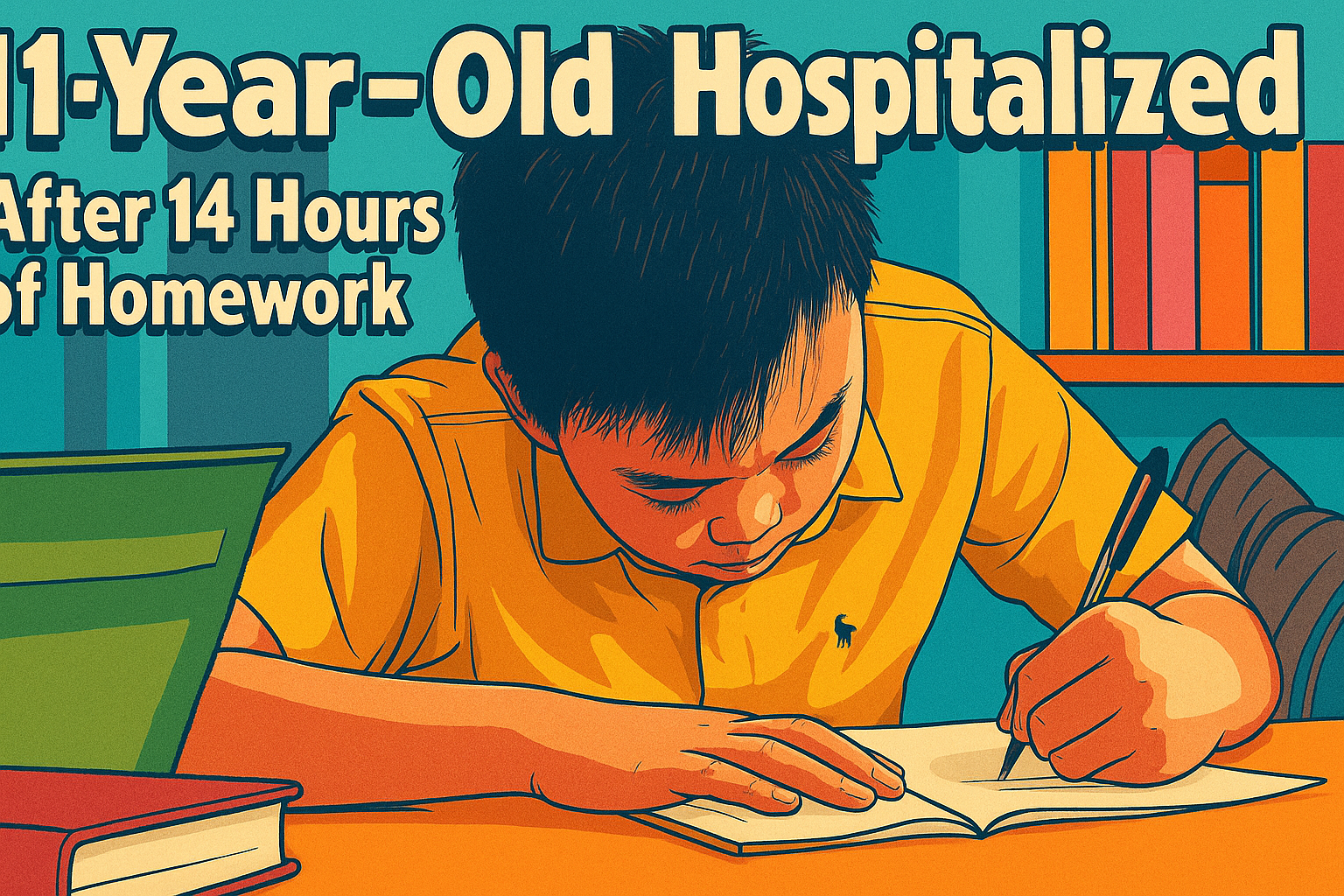11-Year-Old Hospitalized After 14 Hours of Homework: The Shocking Reality
Introduction
In a startling event that has gained international attention, an 11-year-old boy in Changsha, China, was hospitalized after completing 14 hours of continuous homework. The grueling study session caused physical deformities in his hands, described as “chicken claw hands,” and severe breathing difficulties. This incident highlights the extreme academic pressures faced by children in certain education systems and raises questions about balancing educational achievement with child health.
Doctors say he’s one of over 30 kids admitted last month with similar symptomshttps://t.co/W2PzuFozmZ
— Dexerto (@Dexerto) September 20, 2025
1. The Incident: What Happened?
The boy, identified as Liangliang, studied nonstop from 8 a.m. to 10 p.m. under parental supervision. Doctors at Changsha Central Hospital reported that he suffered from physical strain, muscle fatigue, and dangerous breathing issues, requiring a breathing mask for recovery.
Images from the scene circulated online: one shows Liangliang intensely focused at a desk surrounded by books, and another depicts the hospital ward where he was treated, underscoring the severity of his condition.
2. Rising Cases of Homework-Induced Health Problems
This is not an isolated case. In the past month alone, over 30 children were admitted with similar symptoms related to prolonged study sessions. Doctors and child health experts link the increase to:
- Excessive academic expectations
- Continuous homework without breaks
- Anxiety from competitive exams such as the Gaokao
The situation reflects a growing health concern for students in high-pressure educational environments.
3. Academic Pressure in China
China’s education system is renowned for its rigor. High performance in exams often determines future career opportunities. However, incidents like Liangliang’s hospitalization illustrate the dark side of extreme academic pressure, which can compromise both physical and mental health.
Parents, educators, and policymakers are increasingly debating whether such intensity is necessary or harmful. Experts emphasize that balance, rest, and mental health support are crucial for young learners.
4. Health Implications of Excessive Homework
Medical professionals warn that excessive homework can lead to:
- Musculoskeletal problems like “chicken claw hands”
- Sleep deprivation and fatigue
- Respiratory and cardiovascular stress
- Mental health issues including anxiety and depression
These findings are consistent with international research suggesting that moderate homework, combined with play and rest, benefits children far more than prolonged study sessions.
5. Social Media Reactions
On platforms like X (formerly Twitter), the incident has sparked outrage:
- Users called it “child cruelty” and “abuse, not education”
- Others expressed shock at 14-hour homework sessions, reflecting a global consensus on the need for balanced learning
The discussion highlights growing awareness of child well-being in education.
Conclusion
The hospitalization of Liangliang after 14 hours of nonstop homework serves as a stark reminder of the risks associated with extreme academic pressure. While education is important, protecting children’s physical and mental health must be a priority. This case underscores the need for parents, schools, and policymakers to rethink homework policies, enforce study breaks, and promote holistic child development.
FAQs
Q1: What are “chicken claw hands”?
A1: A condition caused by prolonged writing or hand strain, resulting in curled fingers and muscle fatigue.
Q2: Is this a common issue in China?
A2: Extreme homework and academic pressure have been reported widely, with dozens of children hospitalized recently for similar symptoms.
Q3: How can parents prevent homework-related health issues?
A3: Ensure children take breaks, limit continuous study hours, encourage physical activity, and monitor mental well-being.
Q4: Are there any official regulations regarding homework limits in China?
A4: Some regions have implemented limits for primary school students, but enforcement varies, and cultural expectations often override regulations.
Q5: What can schools do to balance learning and health?
A5: Schools should adopt reasonable homework policies, integrate wellness programs, and emphasize skill-based learning over sheer workload.
Conclusion: This incident forces a critical reflection on the intersection of culture, education, and child health. While academic rigor has undeniable value, pushing children to physical and mental extremes is counterproductive. Globally, this highlights a universal challenge: ensuring educational systems nurture intelligence without compromising well-being. Policymakers, educators, and parents must recognize that a child’s long-term potential is best cultivated through balanced, supportive, and humane learning environments.


0 comments